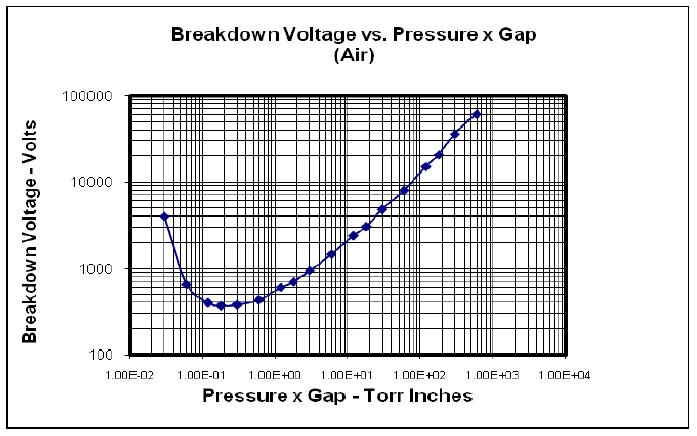|
Using my electrical CDI/coil tester (which differs in output voltage from the Grubee stator coil) I obtained the following maximum spark gaps for these ignition systems: stock CDI/coil .06" (1.5mm which is twice the normal spark plug
gap) 73% of these spark gaps is what these ignition systems can achieve at
sea level according to the chart below because seal level pressure (762 Torr) is 37% higher than the 555 Torr of where I performed these tests at.
(762 x .73 = 555 x 1) Utilizing the chart relating spark voltage to gap (and figuring in the atmospheric air pressure in Torr which is 555 at my high altitude) I came up with the voltages each ignition system produced. (The chart is a bit tricky to use because it is a logarithmic graph.) Air pressure in Torr x Inches of spark gap = voltage  So, in conclusion, my CDI and motorcycle ignition coil produces at least twice as much voltage as the standard CDI/coil combo. According to the research paper "Devices to improve the performance of a conventional two-stroke spark ignition engine" 2.5% more power is derived from each 33% increase in spark power. That means with a 100% increase (2x normal) there is a 7.5% engine power increase. The power increase would be even more though if there was also an increase in actual electrical current in the spark which I suspect there is. Electrical power is voltage times current. |